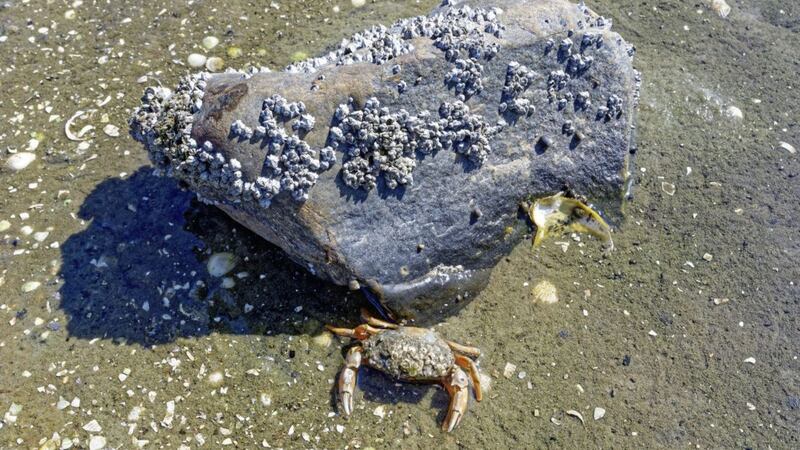MY rowan tree boughs, heavily laden with clusters of scarlet berries provide a meeting point for local blackbirds, enthusiastic again after their moult and happy to feast on the rich cache of food.
This annual ritual signals an end to summer's work and nudges us towards autumn, with its calls to the chattering swallows and other migrant birds to prepare for their departure. A light scattering of fallen birch leaves and dwindling daylight also hint at the change to come.
Despite this, the recent warm spell returned a little bit of summer again and the opportunity to enjoy time along the rockpools of Bundoran's west end.
Lying below the rocky cliffs of shales which stare out across Donegal Bay towards St John's Point and the impressive cliffs of Slieve League, pools of frenzied life play out their dramas between the tides.
The small bodies of water I explored were filled with diversity of colour and form. Sea-anemones with floating tentacles open, were ready to pounce on passing prey, while tiny shrimps glided gracefully like ballet dancers before stopping to hover against a background of red and brown algal seaweed enhancing their presence.
Lurking close to the cover of some wrack, the appearance of a skulking crab brought back childhood days, when the sight of the crustacean underfoot caused much angst and alarm while enjoying swims in the sea.
This common crab around Irish shores, also called the green crab, is native to European coasts and the North African coast but has also become an invasive species in other countries of the world including Australia, South Africa, and North America.
Carcinus maenas is medium-sized, with a shell or carapace around six centimetres long and eight wide, and can range in colour from green through to orange.
Noticeable on the shell are the five spikes on either side of the rim and three lobes between the eyes - unique features of this crab. Predatory by nature, the common crab will eat almost anything from molluscs, barnacles or other crustaceans, using its two powerful front claws to prise open shells and delicately pass the food to its mouth.
The crab uses its other four pairs of legs to walk, mostly sideways, and swim. As I watched another edge out from the cover of some seaweed, I felt a sense of amusement that such small creatures caused the dread they did all those years ago, my human foot probably a bigger threat to them as they hurriedly scuttled off.
Pórtan glas, the green or shore crab, as Gaeilge, is itself a source of food for larger fish in open waters and for many sea birds. Coastal otters too will happily prey on crabs while prowling along inlets and pools.
Having once witnessed a grey heron catch a crab by the shore, these rock pool crabs reminded me of the ancient Indian fable, The Crane and the Crab, where the crane tried to convince a local crab to travel with her to the safety of an enchanted pond which was free from fishermen and other dangers.
The crane had already enticed many fish to move and after she had finished carrying the last group there, she said to the crab, ''Clasp your claws around my neck and hold fast", before spreading her wings and flying off. As they came close to the pond the crab spotted fish bones on the bank and, realising he was being deceived just as the fish had been, squeezed his pointed claws into the crane's neck and strangled her to death.
Maybe I should still be wary of the irritable shore crab.








